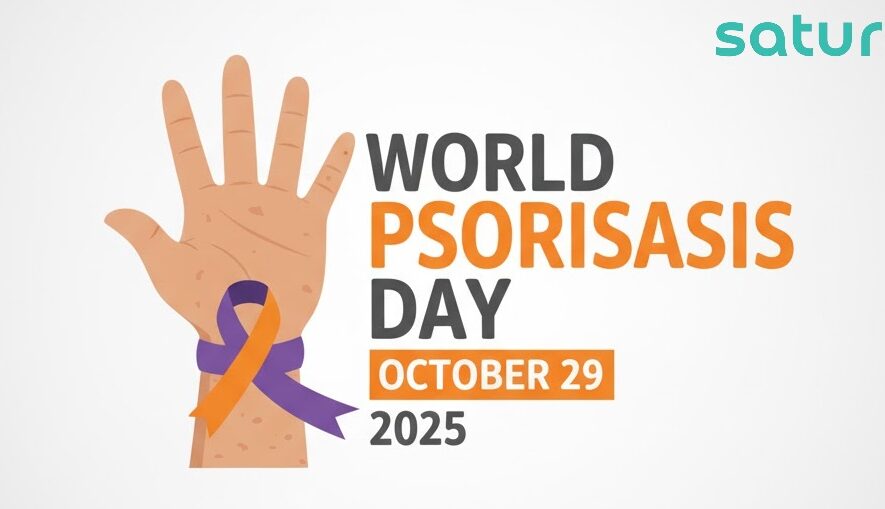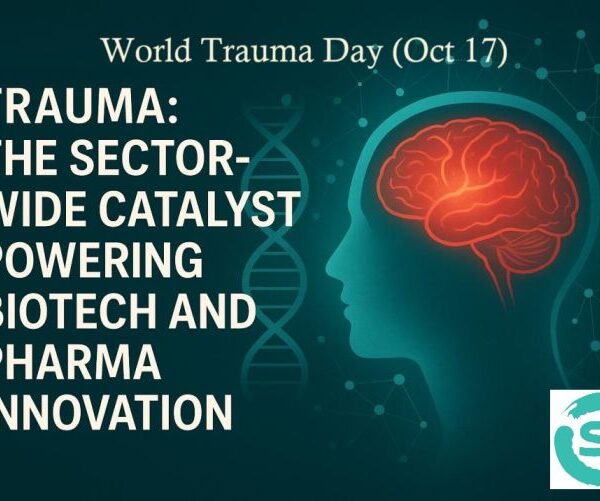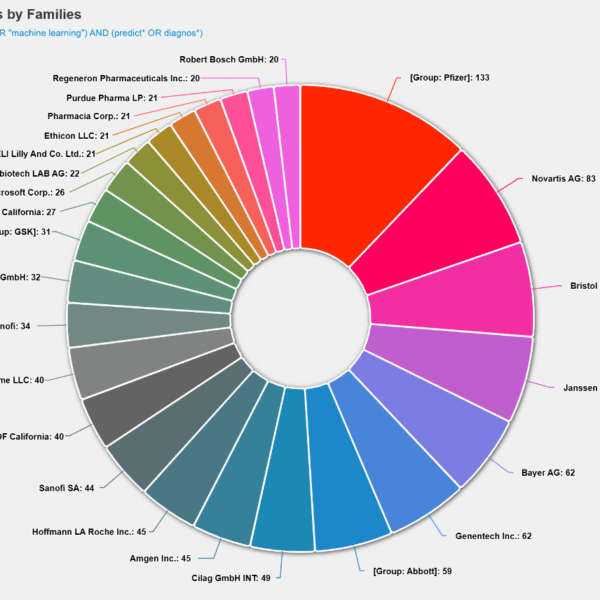
Contributors: Premkumar Narala, Associate Director – Quality & Sindhura Pulapaka, Senior Research Analyst [Oct 2025]
World Psoriasis Day 2025: How multi-omics, AI-driven translational R&D and data-native manufacturing are redefining drug discovery for psoriatic disease and comorbidities.
The Data Turning Point
In 2024–25, the published literature and available datasets revealed a surge in large-scale multi-omics analyses for psoriatic disease—linking genomics, transcriptomics and proteomics to clinical phenotypes and comorbidities. For example, a 2025 study used DNA methylation, gene expression and protein abundance data to identify causal associations with psoriasis risk. [1]
This body of work reframes the classic skin-only view of psoriasis into a systemic inflammatory disorder with molecular domino effects spanning across metabolic, cardiovascular and arthritic axes. [2, 3]
In R&D terms, we’ve crossed a threshold: the starting point is no longer “clear skin” alone, but “what networks of inflammation drive multi-organ impact”.
Why This Matters for Translational R&D
Consider a row of dominos: knock over one, the rest fall. Here, the first tile is an inflammatory signal (e.g., IL-17) in skin. The next is a metabolic disturbance. Then cardiovascular stress. Then joint inflammation. Biotech and pharma need to stop thinking in silos (skin vs joint vs heart) and instead target network nodes.
This shift has implications across discovery, preclinical, regulatory, manufacturing and commercialization. The future year (2026-27) will belong to teams that treat inflammation as a system, not a symptom.
Artificial Intelligence & Multi-Omics in Biotech R&D
AI in mapping psoriatic disease networks
Advanced machine-learning and graph-based modelling now underpin multi-omics integration in psoriasis research. For instance, reviews cite how multi-omics + host-microbiome data uncovered new subtypes of psoriasis associated with viral responses and metabolic pathway signatures. [4, 5]
In practical R&D terms:
- Target nomination increasingly emerges from network analytics rather than single gene intuition.
- In-silico simulations of compound-cytokine interactions accelerate early decision-making.
- Predictive modelling anticipates which comorbidity axes (metabolic, cardiovascular, arthritic) a given candidate may influence.
In short: AI + multi-omics means you’re no longer asking “Does this molecule reduce skin plaques?” but “Does it modulate a pathogenic network across organs?”
Translational R&D in Action
Discovery & Preclinical Development
In the drug-discovery phase for psoriatic disease, the workflow shifts as follows:
- Target discovery: Multi-omics datasets (eg DNA methylation → gene expression → protein signature) highlight new candidates. [1, 5]
- In-silico validation: Machine learning filters for targets whose perturbation may cut across comorbidity networks (eg skin → joint → metabolic).
- Preclinical modelling: Cellular or organ-oid systems replicate not just skin lesions but metabolic/vascular context, enabling read-through to comorbidity risk.
For R&D leads this means: Start pipelines with data-rich hypotheses and network context, not simply “skin clearance”.
Regulatory Strategy
The regulatory environment is evolving to reflect this network-centric, mechanism-centric view. For example, the Food and Drug Administration’s “Complex Innovative Trial Design” (CID) framework supports novel trial architectures—including adaptive, Bayesian and simulation-driven models. [6, 7]
That means sponsors in immunology/dermatology can now propose trials that evaluate mechanism-modules rather than disease-specific endpoints only. The advantage: faster proof-of-mechanism, earlier de-risking, cross-indication potential.
Manufacturing & Scale-Up
Manufacturing for biologics (eg IL-17, IL-23 inhibitors) is no longer separate from R&D data flows. In the life science ecosystem, we see:
- Digital twin platforms linking lab cell-line behaviours to production lots.
- Process analytical technology (PAT) data feeding back into design of cell-culture and downstream processing.
- Cloud-based analytics for batch-variability prediction, enabling smoother scale-up and tech transfer.
This means manufacturing teams must think like R&D teams: data integrity from discovery through scale. (Public materials from pharma-leaders confirm digitalization and manufacturing twin initiatives, though specific performance gains vary.) [8]
Pharma Innovation & Life Sciences Data Services
Cross-functional convergence
The winning pipelines in 2026 will be those where biotech R&D, data science, process engineering and regulatory strategy converge.
- Discovery: AI + multi-omics nominating targets that span organ systems.
- Preclinical: Models built to reflect comorbidity networks.
- Manufacturing: Digital twin & PAT systems delivering consistency and scalability.
- Regulatory: Mechanism-based, cross-indication protocols via CID frameworks.
Why data services matter
Raw data isn’t enough. What R&D teams need is curated, indexed, and actionable intelligence—literature, patents, workflows. This is where services like the following earn their place.
How Saturo Global supports life sciences / pharma R&D teams
Data Curation & Integration
Saturo Global aggregates multi-omics, clinical and proprietary datasets. It normalizes disparate sources into unified structures, enabling R&D teams in psoriatic disease to mine for cross-indication targets.
Indexing & Abstracting
Saturo Global uses AI-based taxonomy models to tag, cluster and abstract the literature, trials, and patent filings. For R&D leaders this means time to insight drops sharply and actionable leads emerge faster.
Strategic Patent Support
Saturo Global tracks global IP in cytokine/gene-pathway domains (e.g., IL-17, IL-23, JAK/STAT). Saturo Global provides whitespace maps, infringement risk analysis and opportunity identification—vital in a crowded immunology space.
Outcome for R&D: Faster, smarter translation from biological hypothesis to preclinical validation—grounded in structured, high-fidelity data ecosystems. For any service related to your data-driven processes, please do not hesitate to contact us and do connect on LinkedIn.
Final Outlook: Partnerships & the Future of Drug Development
The next chapter in psoriatic-disease therapeutics won’t be written by isolated teams. It will require ecosystems—biotech, big pharma, data science firms, digital-bio manufacturing specialists.
Key themes for the near future (2026-27):
- Trials that embed digital biomarkers and real-world evidence across comorbidities.
- Open-data consortia linking inflammatory-disease datasets across geographies.
- AI-human collaboration frameworks where algorithmic hypothesis generation meets wet-lab verification.
- Manufacturing networks that merge R&D and production through data-driven digital twins and continuous control.
The domino effect originally described in terms of biology now applies to operational models: discovery → data → manufacturing → regulatory → market. If one tile falls, the rest align.
On World Psoriasis Day 2025, the message is clear: Understanding the domino effect in psoriatic disease isn’t just about treating skin plaques. It’s about transforming how we do science, how we build pipelines, and how we deliver therapeutics for multi-system immune disorders.
References
- https://translational-medicine.biomedcentral.com/counter/pdf/10.1186/s12967-025-06099-w.pdf
- https://academic.oup.com/bjd/article-abstract/190/3/e31/7609291?redirectedFrom=fulltext
- https://psoriasiscouncil.org/comorbidities/treating-inflammation/
- https://pubmed.ncbi.nlm.nih.gov/38924840/
- https://pubmed.ncbi.nlm.nih.gov/38256115/
- https://www.fda.gov/regulatory-information/search-fda-guidance-documents/interacting-fda-complex-innovative-trial-designs-drugs-and-biological-products
- https://www.fda.gov/drugs/development-resources/complex-innovative-trial-design-meeting-program
- https://pubmed.ncbi.nlm.nih.gov/38796272/



